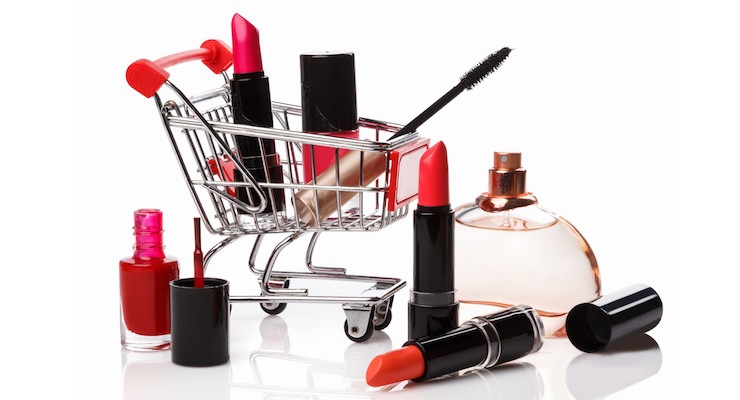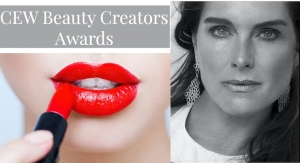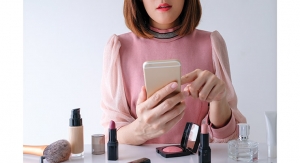03.11.16
At the start of 2016, the NPD Group took a look back - and presented its 2015 year-end global and U.S. sales results, along with retail trends and proprietary consumer research findings, exclusively for members of CEW.
“We are delighted to have collaborated with The NPD Group again to present this critical beauty industry intel,” said Carlotta Jacobson, president of CEW. The event was sponsored by MANE, 24 Seven, Nielsen, Mintel, Beauty Inc, WWD and Kaplow Communications.
Karen Grant, vice president and global beauty industry expert for The NPD Group, and member of Beauty Packaging’s Board of Advisors, says, “The beauty industry is in a state of renewal and flux, and what’s driving the industry today has changed…The trends in beauty are more diverse and moving faster than ever, as are the consumers.”
Prestige Beauty Grew More Than Mass
The prestige beauty category in the U.S. grew by 7 percent to $16 billion in 2015, while mass beauty grew 2% to $21.7 billion.

The NPD Group's Don Unser, Karen Grant and Andy Mantis
In the Mass Market, a few of the stand-out products were lip products, which were the top performer in Makeup, and body products, which topped the charts in Skin Care.
One highlight in the Prestige Skin Care market is the Natural and Clinical category, which grew by 10% in 2015. “Brands like Kiehl’s, LaMer and Fresh are among the top sellers,” says Grant.
Don Unser, group president, The NPD Group, advises brands - and retailers - to remember the growing importance of e-commerce, as well as Amazon. He also points out that of all the consumer industries in the U.S., Beauty is the top category in terms of growth percentage - and its growth is being driven by makeup, in both the Prestige and Mass categories.
The Makeup Category Grows ‘Round the World
Makeup is the product category that showed the most growth in 2015, especially in Prestige - and in every part of the world. Here’s the growth of the category, by region: North America, 14%; Europe, 8%; South America, 26%. “Depending on the country, the growth in makeup varies from designer brands to makeup artist brands to alternative/young trendy brands as well as clinical brands,” Grant says.
Consumers are looking for makeup products that deliver immediate results, Grant says, which may explain the recent surge in popularity of foundation and contouring kits. She explains, “The lines continue to blur between makeup and skin care as consumers look for immediate results through makeup and rediscover smaller primary care categories in skin care.”
Social Media Drives the Sale of Brow Products
Eyebrow and lip color are the product types that are ranking highest in terms of growth, in all regions of the world. Brow sales have grown consistently around the globe for the 3rd year, according to NPD’s research. Reports show double-digit increases led by Canada with a 42% growth, followed by the U.S., Italy and Spain.
The leaders in brow products include smaller brands, according to Grant, which are driving sales through social media. “Brands such as Benefit and Anastasia are at the forefront of this trend,” she says, continuing, “Social media has been a big driver and facilitator by bringing new attention to little known brands, while also providing instructions, techniques and product reviews that help consumers learn the how-to’s and embrace the brow trend.”
Flankers are Winning
Grant also says that fragrance sales are on the rise - and outperformed skin care for the first time in 2015. Fragrance dollars grew by 4%, while skin care, by 3%.
“Fragrance sales are dynamic in core components like juices, and the market for home ancillaries is growing,” she said. “Familiar brands offering spin offs, aka flankers, were one of the biggest drivers of fragrance growth. These brands typically mirror the packaging of winning scents with updated elements both in scent and design.”
Expect Millennials’ Spending Power To Continue
Beauty brands already know the importance of tapping into Millennials - and many are actively courting this consumer group by launching products developed specifically for them, like Estee Lauder’s Edit line, sold exclusively at Sephora, and Stella McCartney’s Pop fragrance.
Millennials are projected to spend $1.4 trillion annually, per Accenture, and represent 30% of total retail sales by 2020, said Andy Mantis, executive vice president, Checkout Tracking, The NPD Group.
Mantis discussed the luxury retail millennial buyer, noting that 87% of this group are also shopping at off-price retailers and are giving a larger share of their beauty spend to department stores and specialty stores, compared to non-luxury retail millennial buyers.
“With Millennials representing such a large share of annual spending power, it’s critical to engage this demographic. Brands and retailers need to understand how Millennials spend their money, what they buy, where they shop and what brands they value,” Mantis advised. NPD’s Checkout Tracking services captures this data by harvesting paper and e-receipts to analyze consumer spending.
Read More
The New Look of Beauty: NPD’s Karen Grant says there is a beauty transformation happening in 2016
CEW Product Demo Points to Cosmetic Trends
“We are delighted to have collaborated with The NPD Group again to present this critical beauty industry intel,” said Carlotta Jacobson, president of CEW. The event was sponsored by MANE, 24 Seven, Nielsen, Mintel, Beauty Inc, WWD and Kaplow Communications.
Karen Grant, vice president and global beauty industry expert for The NPD Group, and member of Beauty Packaging’s Board of Advisors, says, “The beauty industry is in a state of renewal and flux, and what’s driving the industry today has changed…The trends in beauty are more diverse and moving faster than ever, as are the consumers.”
Prestige Beauty Grew More Than Mass
The prestige beauty category in the U.S. grew by 7 percent to $16 billion in 2015, while mass beauty grew 2% to $21.7 billion.
The NPD Group's Don Unser, Karen Grant and Andy Mantis
One highlight in the Prestige Skin Care market is the Natural and Clinical category, which grew by 10% in 2015. “Brands like Kiehl’s, LaMer and Fresh are among the top sellers,” says Grant.
Don Unser, group president, The NPD Group, advises brands - and retailers - to remember the growing importance of e-commerce, as well as Amazon. He also points out that of all the consumer industries in the U.S., Beauty is the top category in terms of growth percentage - and its growth is being driven by makeup, in both the Prestige and Mass categories.
The Makeup Category Grows ‘Round the World
Makeup is the product category that showed the most growth in 2015, especially in Prestige - and in every part of the world. Here’s the growth of the category, by region: North America, 14%; Europe, 8%; South America, 26%. “Depending on the country, the growth in makeup varies from designer brands to makeup artist brands to alternative/young trendy brands as well as clinical brands,” Grant says.
Consumers are looking for makeup products that deliver immediate results, Grant says, which may explain the recent surge in popularity of foundation and contouring kits. She explains, “The lines continue to blur between makeup and skin care as consumers look for immediate results through makeup and rediscover smaller primary care categories in skin care.”
Social Media Drives the Sale of Brow Products
Eyebrow and lip color are the product types that are ranking highest in terms of growth, in all regions of the world. Brow sales have grown consistently around the globe for the 3rd year, according to NPD’s research. Reports show double-digit increases led by Canada with a 42% growth, followed by the U.S., Italy and Spain.
The leaders in brow products include smaller brands, according to Grant, which are driving sales through social media. “Brands such as Benefit and Anastasia are at the forefront of this trend,” she says, continuing, “Social media has been a big driver and facilitator by bringing new attention to little known brands, while also providing instructions, techniques and product reviews that help consumers learn the how-to’s and embrace the brow trend.”
Flankers are Winning
Grant also says that fragrance sales are on the rise - and outperformed skin care for the first time in 2015. Fragrance dollars grew by 4%, while skin care, by 3%.
“Fragrance sales are dynamic in core components like juices, and the market for home ancillaries is growing,” she said. “Familiar brands offering spin offs, aka flankers, were one of the biggest drivers of fragrance growth. These brands typically mirror the packaging of winning scents with updated elements both in scent and design.”
Expect Millennials’ Spending Power To Continue
Beauty brands already know the importance of tapping into Millennials - and many are actively courting this consumer group by launching products developed specifically for them, like Estee Lauder’s Edit line, sold exclusively at Sephora, and Stella McCartney’s Pop fragrance.
Millennials are projected to spend $1.4 trillion annually, per Accenture, and represent 30% of total retail sales by 2020, said Andy Mantis, executive vice president, Checkout Tracking, The NPD Group.
Mantis discussed the luxury retail millennial buyer, noting that 87% of this group are also shopping at off-price retailers and are giving a larger share of their beauty spend to department stores and specialty stores, compared to non-luxury retail millennial buyers.
“With Millennials representing such a large share of annual spending power, it’s critical to engage this demographic. Brands and retailers need to understand how Millennials spend their money, what they buy, where they shop and what brands they value,” Mantis advised. NPD’s Checkout Tracking services captures this data by harvesting paper and e-receipts to analyze consumer spending.
Read More
The New Look of Beauty: NPD’s Karen Grant says there is a beauty transformation happening in 2016
CEW Product Demo Points to Cosmetic Trends




























